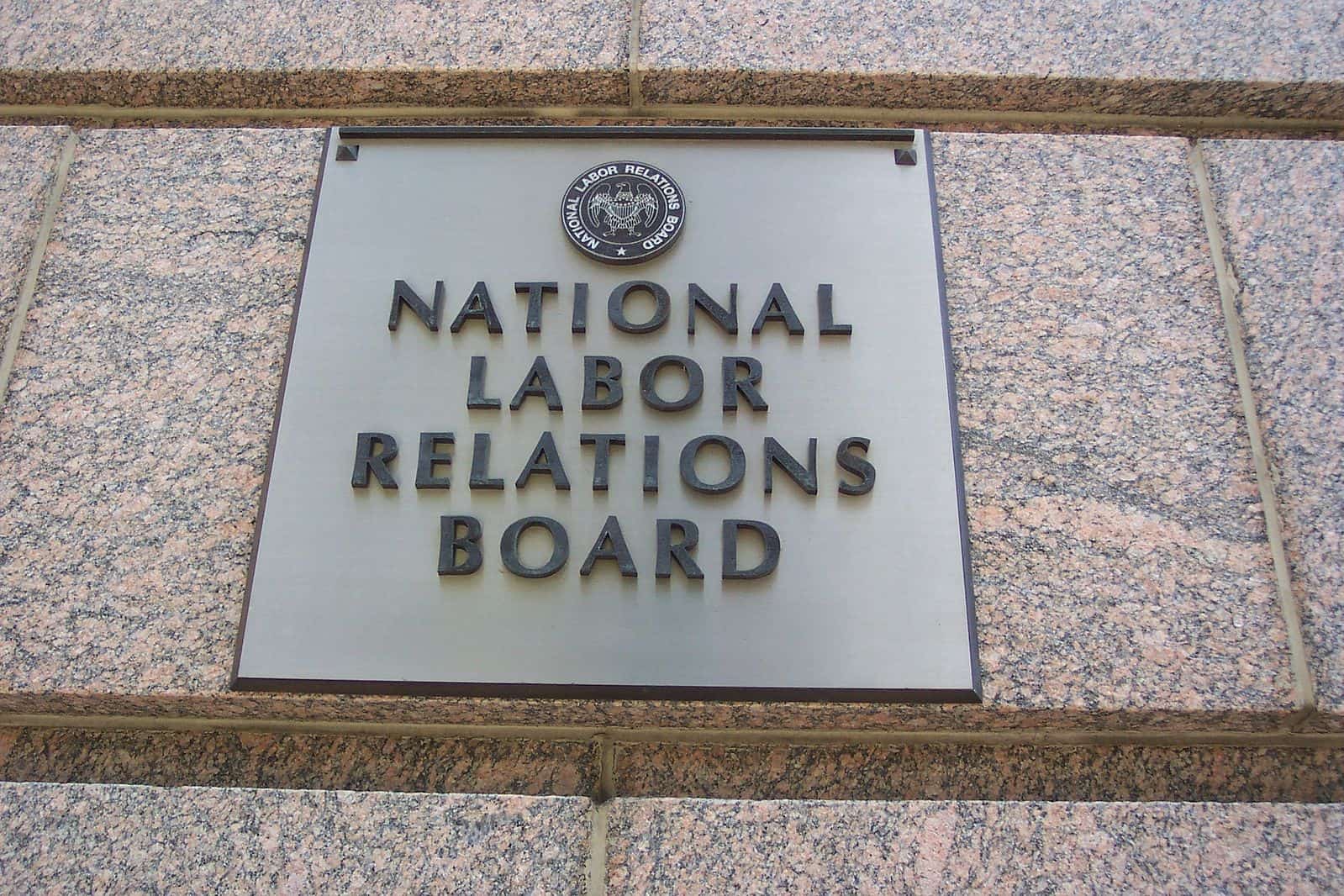
Benjamin Sachs is the Kestnbaum Professor of Labor and Industry at Harvard Law School and a leading expert in the field of labor law and labor relations. He is also faculty director of the Center for Labor and a Just Economy. Professor Sachs teaches courses in labor law, employment law, and law and social change, and his writing focuses on union organizing and unions in American politics. Prior to joining the Harvard faculty in 2008, Professor Sachs was the Joseph Goldstein Fellow at Yale Law School. From 2002-2006, he served as Assistant General Counsel of the Service Employees International Union (SEIU) in Washington, D.C. Professor Sachs graduated from Yale Law School in 1998, and served as a judicial law clerk to the Honorable Stephen Reinhardt of the United States Court of Appeals for the Ninth Circuit. His writing has appeared in the Harvard Law Review, the Yale Law Journal, the Columbia Law Review, the New York Times and elsewhere. Professor Sachs received the Yale Law School teaching award in 2007 and in 2013 received the Sacks-Freund Award for Teaching Excellence at Harvard Law School. He can be reached at [email protected].
Much has been written about what the new NLRB General Counsel included in her August 12th memorandum, which sets forth the priorities for her tenure at the Board. A good deal of attention has focused on GC Abruzzo’s decision to take a fresh look at the Joy Silk doctrine and the new regime of bargaining orders that could usher. The memo is, in fact, chock full of important and potentially impactful signals. Among other things, Abruzzo intends to consider (or reconsider): The Boeing Company and its rules regarding employer handbooks; Alstate Maintenance and the definition of concerted activity for mutual aid and protection; Rio All-Suites Hotel and the rules on employee use of employer email systems; Wal-Mart Stores and the doctrine of so-called intermittent strikes; Brevard and the Act’s exclusion of certain workers with disabilities; Supershuttle and the Act’s delineation between employees and independent contractors; Bethany College and the Board’s jurisdiction over religious institutions; IBM and the availability of Weingarten rights in the non-union workplace; Ex-Cell-O Corp. (yes, Ex-Cell-O Corp. of 50 years ago!) and the Board’s power to issue meaningful remedies in refusal-to-bargain cases; multiple cases involving the scope of union access rights to employer property and multiple others on the enforceability of confidentiality agreements. This is an amazing list, and if Abruzzo changes the law in even a fraction of these areas, she will be one of the most significant GCs in Board history. The memorandum is an exciting document and grounds for enormous optimism.
But it’s worth noting, in addition to what is in the memo, one thing that is not: Abruzzo excludes any mention of members-only (or “minority union”) bargaining. Although not at all an obvious or easy question, on balance this omission seems worth correcting.
As the law currently stands, employers are required to bargain only with unions that represent a majority of workers in a given bargaining unit. If a union represents, say, 40% of a unit, the employer has zero obligation to discuss terms and conditions of employment with the union. This is one reason union election campaigns can be, and usually are, such brutal affairs: the employer knows that if it can keep the vote count below the magic 50% threshold, there will be no union at all.
But, as Charlie Morris and others have shown, the statute doesn’t quite support this state of affairs. A more natural construction of the relevant provisions of the NLRA points to the conclusion that employers are required to bargain with minority unions – on behalf of their members only – unless and until a union reaches majority status, at which point it becomes the workers’ exclusive representative. Indeed, Board Member Kent Hirozawa endorsed such a reading in a concurring opinion he authored during the Obama years.
The desirability of members-only unions, the workability of such unions, and the best way to construct a regime that includes members-only and exclusive bargaining unions are very complicated issues, and people with deep commitments to the labor movement and to worker power have different views on them. The promise should be clear, however, even though the risks are real. Think, for example, of the Bessemer workers campaign at Amazon. Under current rules, the fact that fewer than 50% of those workers voted for the union, means that those workers are left with no union at all. Imagine if, instead, Amazon was now under an obligation to bargain with the 1000 or so workers who voted yes.
We spent a good deal of time debating the question of members-only unions in the Clean Slate process and decided that – in the context of a fully reformed system of labor law that included graduated representation rights in the workplace – members-only unions could play an important part. We framed the principle behind our decision by writing that “democracy at work should be a right, not a fight.” We explained:
For too long, securing power and voice at work has required workers to fight herculean battles against nearly impossible odds. This is the fault of our labor law and results from two interrelated features of that law. First, our labor law has presented workers with a binary choice: either have no collective representation in the workplace or have an exclusive bargaining agent in the form of a labor union. If workers do not, or are unable to, elect an exclusive bargaining agent, the law leaves them with no representation at all. Second, the law’s weakness has made it exceedingly difficult for workers to exercise their choice in favor of union representation in the face of extreme employer opposition. In combination, this means that workers only have one option for collective representation—an option that is most often out of reach. . . .
To make democracy at work a right, and not a fight, the statute should provide for a range of representational structures made available to workers according to a system of graduated rights.
Included in this range were members-only unions, a form of representation that, again, seems available under the current statute, should the Board interpret the law this way.
(Catherine Fisk and I reached a similar conclusion when we wrote that members-only unions could be a partial antidote to the unfairness of right-to-work laws, giving unions the option to represent members only in states where only members pay dues. As we wrote: “In any state where employees are permitted to avoid paying anything to unions, federal law ought to relax the requirement of exclusive representation and allow unions to organize, bargain on behalf of, and represent only those workers who affirmatively choose to become members.”)
In my view, we can’t really know what members-only bargaining would look like, or lead to, in the context of today’s labor movement and today’s labor market. But given the dire situation we find ourselves in, a little experimentation seems worth attempting. In fact, workers are forging ahead in this direction. To take one prominent example, the Alphabet Workers Union – being organized by Google workers with the support of CWA – is being built on a minority union model.
Abruzzo has it in her power to find a new 8(a)(5) case and reconsider Dick’s Sporting Goods. She should argue that, absent an exclusive representative, employers are obligated to bargain with a minority union on behalf of that union’s members. If the Board adopted that reading of the statute, it would provide unions with a new approach to organizing workers. And it would do so at a time where workers are very much in need of more such approaches.









Daily News & Commentary
Start your day with our roundup of the latest labor developments. See all
December 22
Worker-friendly legislation enacted in New York; UW Professor wins free speech case; Trucking company ordered to pay $23 million to Teamsters.
December 21
Argentine unions march against labor law reform; WNBA players vote to authorize a strike; and the NLRB prepares to clear its backlog.
December 19
Labor law professors file an amici curiae and the NLRB regains quorum.
December 18
New Jersey adopts disparate impact rules; Teamsters oppose railroad merger; court pauses more shutdown layoffs.
December 17
The TSA suspends a labor union representing 47,000 officers for a second time; the Trump administration seeks to recruit over 1,000 artificial intelligence experts to the federal workforce; and the New York Times reports on the tumultuous changes that U.S. labor relations has seen over the past year.
December 16
Second Circuit affirms dismissal of former collegiate athletes’ antitrust suit; UPS will invest $120 million in truck-unloading robots; Sharon Block argues there are reasons for optimism about labor’s future.